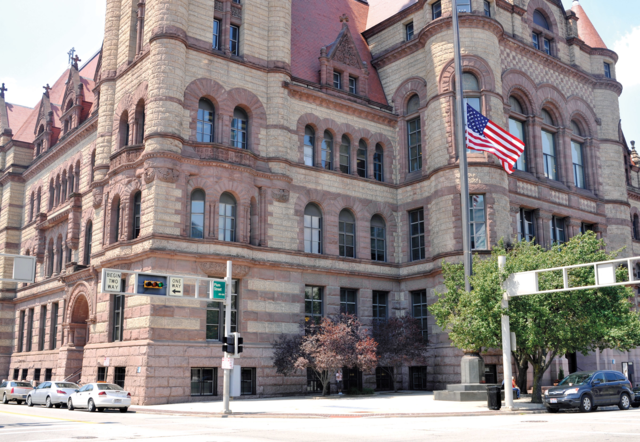Hello all. I hope you’re all getting ready to bid 2016 farewell. The end couldn’t come soon enough. As you ice up those champagne bottles, let me hit you with one last blast of news before the New Year.
The big revelation yesterday, dug up by the Cincinnati Business Courier, was that the city of Cincinnati entered into a $255,000 settlement with former police chief Jeffrey Blackwell in August. Blackwell was fired in 2015 in a highly contentious move by city administration. The former chief threatened litigation, saying he was wrongfully dismissed, but little more came to light until recently. The city never revealed that it had settled with Blackwell, even to Cincinnati City Council, but maintains that his firing was proper and says it settled to avoid legal expenses and the distraction of a high-profile legal battle. The city manager and solicitor have the power to settle lawsuits without Council’s say, but City Manager Harry Black admits that in this case, they should have been consulted. City Councilman Chris Seelbach has introduced an ordinance that would require a Council vote before such settlements in the future. Blackwell’s firing has stirred up new controversy recently after emails between Cincinnati Mayor John Cranley and Chicago Mayor Rahm Emanuel came to light in which Cranley discussed his role in the chief’s dismissal.
• Two area financial institutions found to have engaged in discriminatory lending practices in Cincinnati and other cities between 2010 and 2014 will invest millions in those communities following a federal settlement. Union Savings Bank and Guardian Savings Bank will open full-service branches in African-American communities here and in Columbus, Dayton and Indianapolis where the Department of Justice says they engaged in redlining — avoiding issuing loans and other credit services. The banks must also provide $7 million in loans in those communities and spend at least $2 million advertising those services.
• No surprise here: Cincinnati is a big beer town. The city ranked fourth on a recent list of best cities for suds lovers compiled by website smartasset.com. That ranking considered the number of breweries in the city and the average price of a beer. Cincy ran up the score there, with about 24 bars and 15 microbreweries per 100,000 people and an the average price of $3 for a domestic pint of beer. Cincy was the top city in Ohio, followed by Columbus, which ranked sixth. We’ve also moved up six spots since 2015, when Cincy ranked 10th.
• In state news, Ohio lawmakers won’t try to override Gov. John Kasich’s line-item veto of a bill that would have outlawed abortions after a fetal heartbeat is detectable — generally six weeks. That provision stuck into an unrelated bill caused ire from pro-choice advocates, and Kasich, perhaps sensing it was an anti-abortion law too far, scratched the item out. Kasich, however, did sign a ban on abortions after 20 weeks, making Ohio’s anti-abortion laws among the strictest in the nation.
• You know things are bad when the head of your prison system says incarceration has gotten out of hand. Ohio Department of Rehabilitation and Corrections head Gary Mohr is calling for big changes as Ohio’s prisons see a record number of inmates and ballooning spending. A staggering one-quarter of all state employees work in Ohio’s prison system. Mohr would like to see the state incarcerate 4,000 to 5,000 fewer inmates each year to avoid dropping a cool $1 billion in a new prison to house them. How to do that? Mohr suggests boosting GED and drug treatment programs for those already in prison to reduce recidivism while changing harsh drug offense sentencing laws and diverting non-violent offenders into community-based programs instead of prisons.
• Finally, a brief, perhaps cautionary tale about two states that needed to span the Ohio River (sound familiar?). Kentucky and Indiana just finished not one, but two, new bridges crossing the river, spending $2.6 billion to construct them. The construction includes an insanely rebuilt “spaghetti junction” interchange that handles the intersection of I-65 and I-64 as they pass through Louisville. That interchange is designed to make traffic easier and more efficient, but it’s set off mockery from some urbanists. But that’s a minor point compared to the bridge’s odd toll structure — one that actually incentivizes some drivers to drive more than they normally would. That’s generally not the point of tolls, but, you know, unintended consequences and all. Here’s a good breakdown of the new bridges and their toll structure. It’s an interesting example that might have some lessons as Kentucky and Ohio mull replacing the Brent Spence Bridge, which carries I-75 and I-71 across the Ohio River.


